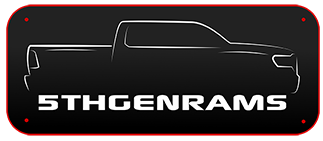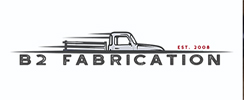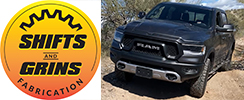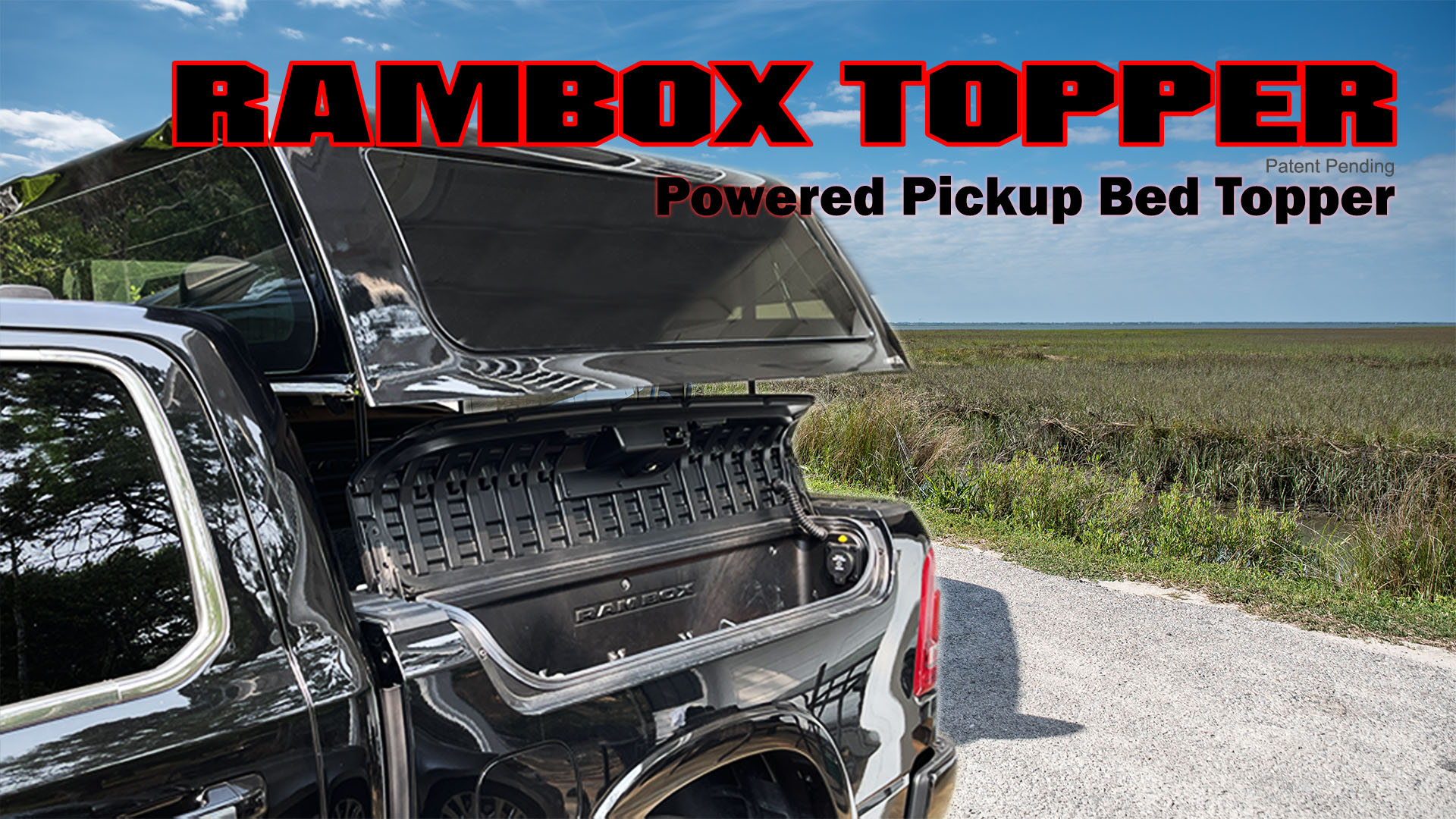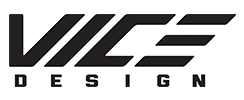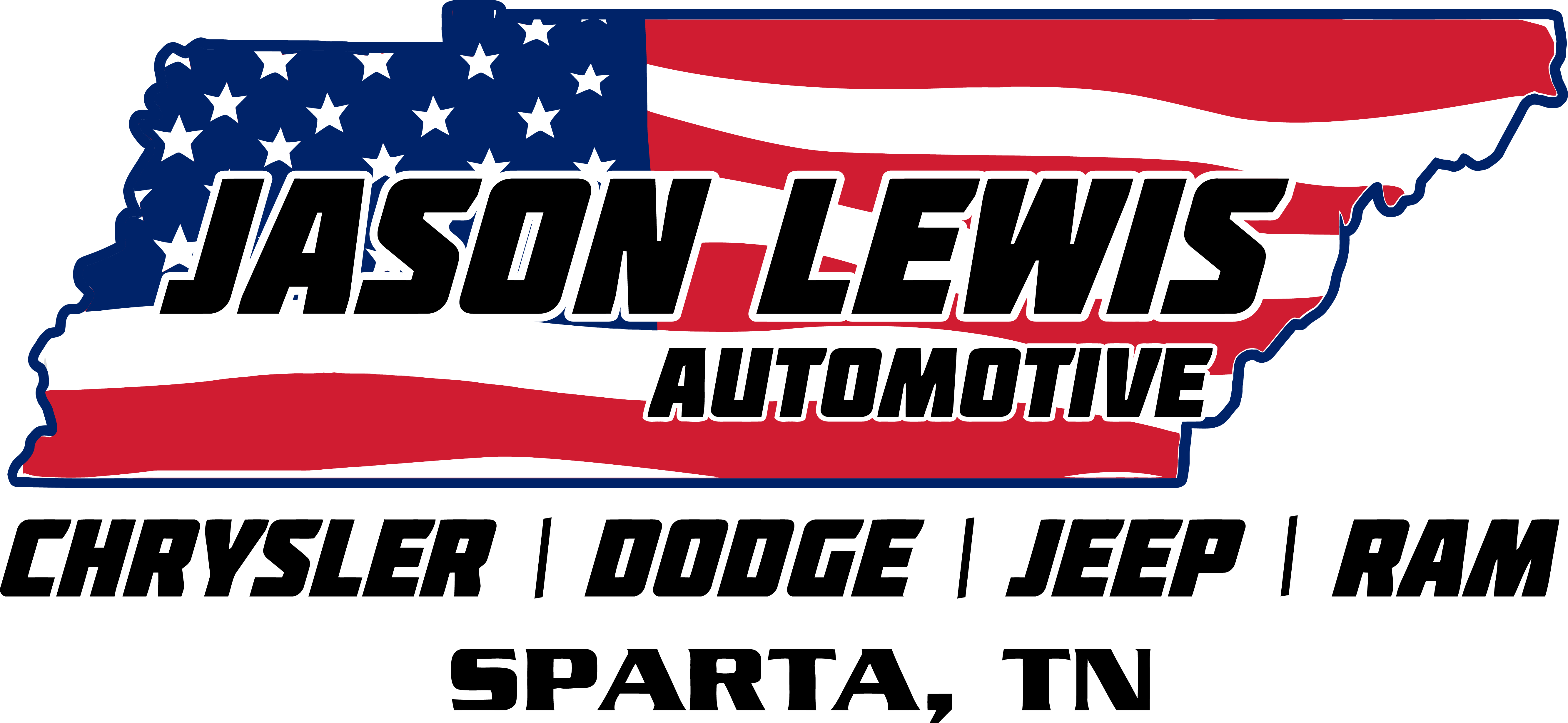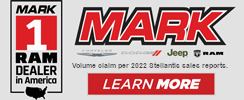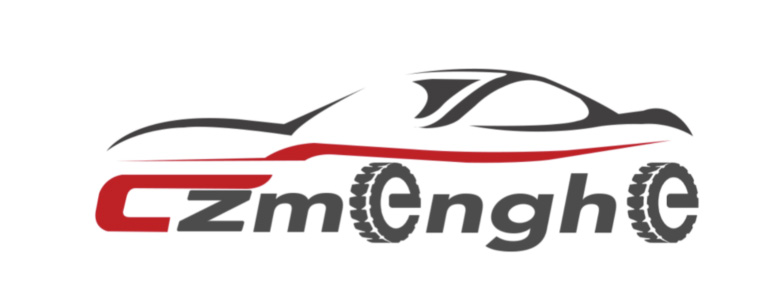boogielander
Spends too much time on here
- Joined
- Jun 29, 2022
- Messages
- 3,496
- Reaction score
- 5,582
- Points
- 113
This post also shows up on my website jollyrogueco.com.
Technical Tuesday is a series of technical discussions I post on Tuesdays (well, unless I don’t remember to post) to help the community make good decisions regarding their builds. This only applies to people who want/ enjoy taking their trucks off pavement, so all the technical discussions do not apply to bro-dozers and the crowd that favors look over function. This week we are talking suspension lift vs pucks.
*Note: This does not apply to air ride unless you delete it completely and go back to the traditional suspension setup.
Companies such as King and Fox offer shocks that have adjusters that allow owners to fine tune their performance. Not only that, offerings from King and Fox (2.5 Performance Elite) are also rebuildable and allows owners to further tune their shocks via changing out the valving to further match the weight, driving style, and performance gains that owners look for.
There are various types of valving for suspension lifts: digressive, progressive, and linear. I cannot explain it better than the experts at AccuTune, so I am linking their blog post on this topic here: Digressive vs Linear vs Progressive Pistons & Shock Valving – AccuTune Off-Road
Usually, suspension lifts cost a bit more, but it is the correct way to do things.
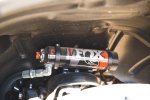
There are 2 types of spacer lifts: top hat spacer and preload spacers.
Top hat spacers are the most used by people who are cheap, do things for look, and have no idea how things work. These are just spacers sitting between the coilover and the strut tower in the front and create that “lifted” look. With top hat spacers, bump stop is now useless because they are too short to do their jobs; so the shock is now the bump stop and hit it hard enough, the shock will collapse. The shock also has less travel than before, since it is limited by the other components that retains stock geometry. In addition, it becomes a problem for the upper arm as the new angle can be too extreme for the UCA ball joint to handle, as well as spring contacting ball joint at droop. There could be other problems with CV and other components because of this as well.
Preload spacers are slightly better than top hat spacers. These go between the top of the coil in the coilovers. These work by increasing the preload to extend the shocks to achieve that “lifted” look ride height. These are bad as well because they can force the shocks to be too extended at ride height, thus limiting the usable suspension travel that the coilovers are designed for.
AccuTune published a really good article with animations that greatly explains how things work: Spacer Lift vs Preload Spacer vs Coilover Preload – AccuTune Off-Road
These are cheap and are the definition of mickey mousing things.
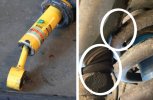
(Image taken from AccuTune)
Imagine this: your stock suspension has a travel between 1-to 10. At stock ride height, you are sitting at 5, leaving you ample space for your shocks to travel and do their job absorbing bumps, dips, and other things in between. With a top hat spacer, your suspension travel now begins at 7, leaving you only 3 more levels for the shock to compress. Your bump stop is now useless because your suspension fully compresses before the bump stop touches, making your shock doubling as a bump stop. You do not have 7 levels for the shock to extend (droop), because your spring hits your upper arm and your lower arm limits how much droop you can have. So now you only have maybe 2 levels of droop before your UCA contacts the spring.
Now, with a preload spacer, You are compressing the spring and extend the shock to achieve the lift. So with the new “lifted” ride height, your suspension travel begins at 3 at ride height, leaving you only 2 levels of droop. You also do not have 7 levels of compression, as the springs can only compress so much.
With a proper engineered suspension system that lifts your truck, you will have longer shocks and springs for the lift and the suspension travel. So now your shock’s travel go from 1-15, with the ride height at level 7. You have ample for the compression stroke, and ample for the extension/ droop stroke. Paired with a properly designed and crafted upper arm, your bump stop will still retain its function and you will not hit the ball joint or run out of ball joint angle. You not only get that “lift” you are looking for, but also get more travel out of your suspension as well.

Granted, this is a 4th gen 2500, but similar idea applies.
There are others that are popular on the forum and in the groups, but I’ve seen some things in the past that make me not want to recommend them.
In conclusion, whether you take your truck off pavement to do a lot of hard trails or not, suspension lifts are always the best options. If you are low on budget, go for Bilsteins. If you can’t even afford that, then go for ORG takeoffs until you can afford to upgrade. Suspension is one of the few things that determines whether you can make it home or not, so don’t cheap out on it.
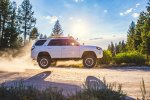
Yeap, I jumped my 4Runner with Bilstein 5100s once. Shocks were blown after. My friend with the 3rd gen Cummins on Carli King was totally fine after this. He went back and did it a few more times just to show the difference between good stuff and the bare minimum.

Set of good suspension can let you do this all day without shock fade. Set of 2.0 (or less) with no reservoir will get you shock fade for sure.
#teamnomickeymouseshit
Technical Tuesday is a series of technical discussions I post on Tuesdays (well, unless I don’t remember to post) to help the community make good decisions regarding their builds. This only applies to people who want/ enjoy taking their trucks off pavement, so all the technical discussions do not apply to bro-dozers and the crowd that favors look over function. This week we are talking suspension lift vs pucks.
*Note: This does not apply to air ride unless you delete it completely and go back to the traditional suspension setup.
- What are suspension lifts?
Companies such as King and Fox offer shocks that have adjusters that allow owners to fine tune their performance. Not only that, offerings from King and Fox (2.5 Performance Elite) are also rebuildable and allows owners to further tune their shocks via changing out the valving to further match the weight, driving style, and performance gains that owners look for.
There are various types of valving for suspension lifts: digressive, progressive, and linear. I cannot explain it better than the experts at AccuTune, so I am linking their blog post on this topic here: Digressive vs Linear vs Progressive Pistons & Shock Valving – AccuTune Off-Road
Usually, suspension lifts cost a bit more, but it is the correct way to do things.

- What are pucks?
There are 2 types of spacer lifts: top hat spacer and preload spacers.
Top hat spacers are the most used by people who are cheap, do things for look, and have no idea how things work. These are just spacers sitting between the coilover and the strut tower in the front and create that “lifted” look. With top hat spacers, bump stop is now useless because they are too short to do their jobs; so the shock is now the bump stop and hit it hard enough, the shock will collapse. The shock also has less travel than before, since it is limited by the other components that retains stock geometry. In addition, it becomes a problem for the upper arm as the new angle can be too extreme for the UCA ball joint to handle, as well as spring contacting ball joint at droop. There could be other problems with CV and other components because of this as well.
Preload spacers are slightly better than top hat spacers. These go between the top of the coil in the coilovers. These work by increasing the preload to extend the shocks to achieve that “lifted” look ride height. These are bad as well because they can force the shocks to be too extended at ride height, thus limiting the usable suspension travel that the coilovers are designed for.
AccuTune published a really good article with animations that greatly explains how things work: Spacer Lift vs Preload Spacer vs Coilover Preload – AccuTune Off-Road
These are cheap and are the definition of mickey mousing things.

(Image taken from AccuTune)
- Why is it important?
Imagine this: your stock suspension has a travel between 1-to 10. At stock ride height, you are sitting at 5, leaving you ample space for your shocks to travel and do their job absorbing bumps, dips, and other things in between. With a top hat spacer, your suspension travel now begins at 7, leaving you only 3 more levels for the shock to compress. Your bump stop is now useless because your suspension fully compresses before the bump stop touches, making your shock doubling as a bump stop. You do not have 7 levels for the shock to extend (droop), because your spring hits your upper arm and your lower arm limits how much droop you can have. So now you only have maybe 2 levels of droop before your UCA contacts the spring.
Now, with a preload spacer, You are compressing the spring and extend the shock to achieve the lift. So with the new “lifted” ride height, your suspension travel begins at 3 at ride height, leaving you only 2 levels of droop. You also do not have 7 levels of compression, as the springs can only compress so much.
With a proper engineered suspension system that lifts your truck, you will have longer shocks and springs for the lift and the suspension travel. So now your shock’s travel go from 1-15, with the ride height at level 7. You have ample for the compression stroke, and ample for the extension/ droop stroke. Paired with a properly designed and crafted upper arm, your bump stop will still retain its function and you will not hit the ball joint or run out of ball joint angle. You not only get that “lift” you are looking for, but also get more travel out of your suspension as well.

Granted, this is a 4th gen 2500, but similar idea applies.
- Suspension kit choices?
There are others that are popular on the forum and in the groups, but I’ve seen some things in the past that make me not want to recommend them.
In conclusion, whether you take your truck off pavement to do a lot of hard trails or not, suspension lifts are always the best options. If you are low on budget, go for Bilsteins. If you can’t even afford that, then go for ORG takeoffs until you can afford to upgrade. Suspension is one of the few things that determines whether you can make it home or not, so don’t cheap out on it.

Yeap, I jumped my 4Runner with Bilstein 5100s once. Shocks were blown after. My friend with the 3rd gen Cummins on Carli King was totally fine after this. He went back and did it a few more times just to show the difference between good stuff and the bare minimum.

Set of good suspension can let you do this all day without shock fade. Set of 2.0 (or less) with no reservoir will get you shock fade for sure.
#teamnomickeymouseshit
Last edited:
